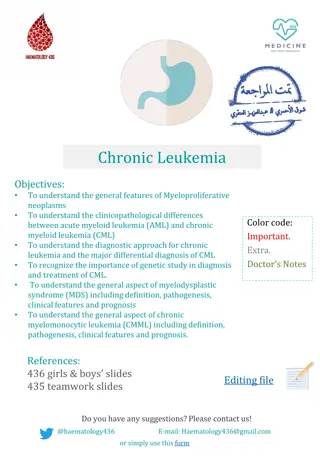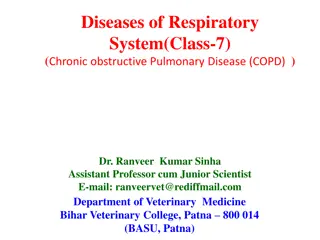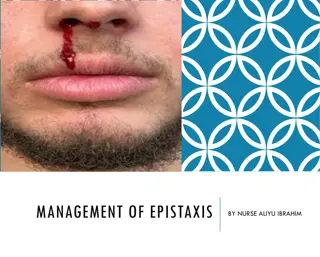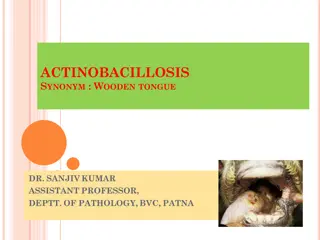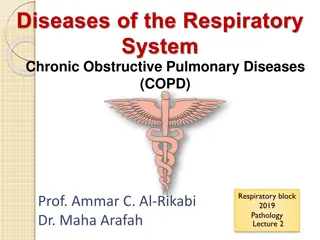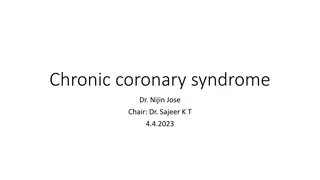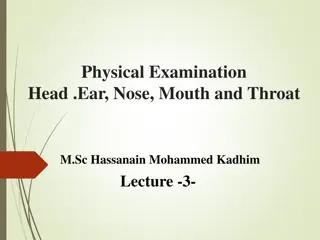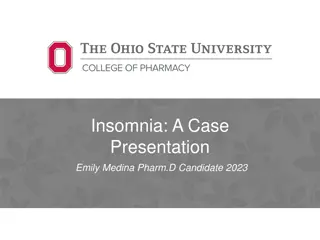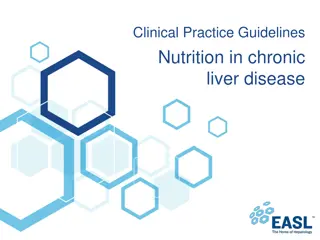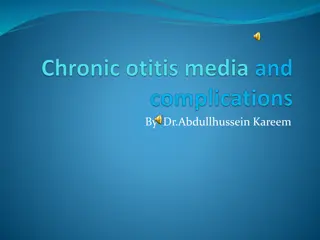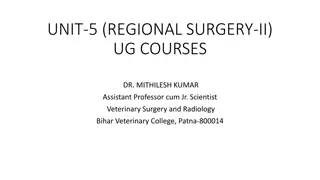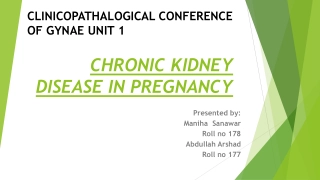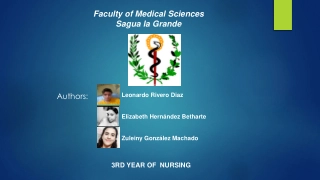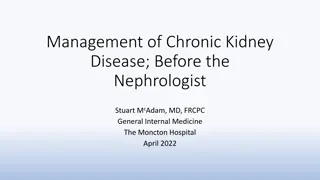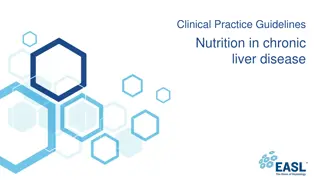Understanding Rhinoscleroma: A Chronic Granulomatous Condition of the Nose
Rhinoscleroma is a chronic granulomatous condition of the nose caused by infection with the bacterium rhinoscleromatis. It primarily affects the nasal cavity but can also involve other respiratory tract structures. The disease is contracted through inhalation and exhibits distinct pathological stages. Common symptoms include nasal obstruction, rhinorrhea, and epistaxis. Rhinoscleroma is endemic in certain regions and tends to affect females more frequently.
Download Presentation

Please find below an Image/Link to download the presentation.
The content on the website is provided AS IS for your information and personal use only. It may not be sold, licensed, or shared on other websites without obtaining consent from the author. Download presentation by click this link. If you encounter any issues during the download, it is possible that the publisher has removed the file from their server.
E N D
Presentation Transcript
Chronic granulomatous conditions of nose
Rhinoscleroma is a chronic granulomatous condition of the nose structures of respiratory tract. It is a result of infection by the bacterium rhinoscleromatis. and the other upper Klebsiella
Rhinoscleroma is contracted by means of the direct inhalation of droplets or material. The disease probably begins in areas of epithelial transition such as the vestibule of the nose, the subglottic area of the larynx, or the area nasopharynx and oropharynx. contaminated between the
Rhinoscleroma usually affects the nasal cavity, but lesions associated with rhinoscleroma may also affect the larynx; nasopharynx; paranasal sinuses; tissues of the trachea, and bronchi. oral cavity; or lips, soft nose,
Epidemiology It is endemic to regions of Africa (Egypt, tropical Asia, Mexico, Central America, and Central and Eastern Europe. Rhinoscleroma tends to affect females somewhat more often than it does males. Typically, rhinoscleroma appears in patients aged 10-30 years. areas), Southeast and South
Disease may start as a single nodule or in groups in nasal cavity. The lesions do not suppurate or ulcerate They heal by dense cicatrization, almost cartilage like hardness
Possible history findings Nasal obstruction (most common complaint) Rhinorrhea Epistaxis Dysphagia Nasal deformity Anesthesia of the soft palate Difficulty breathing that progresses to stridor Dysphonia Anosmia
Pathological development Diffuse stage resembling atrophic rhinitis Stage of localisation and organisation Stage of cicatrization
DD Atrophic rhinitis Tertiary syphilis Lupus Leprosy Cancer
Treatment Streptomycin Tetracyclines Chlorophenicol Steroids Locally Systemically
Wegners Granulomatosis
A condition characterized by granulomatous involving the respiratory tract and necrotizing affecting small sized vessels. The pathological hallmark is the co-existence of vasculitis and granulomas classically involves a triad of airway, lungs disease. inflammation vasculitis medium to and and renal
Age and Sex Significant patients below 25 years of age. Younger patients present with a generalized form. number of
Aetiology Aetiology remains unknown. Its inflammatory nature and resemblance nodosa suggests represents some hypersensitivity reaction. It might be related to inhaled bacteria. to polyarteritis that form it of
Clinical Features Most patients start with minor ENT symptoms Variable degree of epistaxis Nasal Obstruction Bloody crusts Destruction of intranasal structures including septum may follow leading eventually to nasal collapse. Patients may complain of significant facial pain.
Clinical Features Patients frequently complain of progressive pyrexia, weight loss and feel very unwell. Nose and paranasal sinuses are involved in 80% patients. Intranasal destruction cartilage and bone leads to septal perforation. malaise, of
Pulmonary symptoms Cough Haemoptysis Pleuritic pain Cavitation Encapsulated lung abscess
Renal Symptoms Between 30% to 90% patients develop renal symptoms. Microscopic haematuria Segmental or diffuse glomerulonephritis.
Ocular manifestations Conjuctiviitis Dacrocystitis Corneal ulceration Optic neuritis and retinal artery occlusion. Blindness unilateral or bilateral
Otologic sympoms Acute otitis media Otitis media with effusion Deafness Otalgia Both conductive and sensorineural hearing loss
Diagnosis cANCA test is positive in 95% of patients. A full blood count ESR Renal Profile Urine analysis
Biopsy from septum or turbinates Vasculitis Granulomas of epithelial cell type Multinucleated giant cells
Mucosal thickening Bone destruction New bone formation
Treatment Steroids and a variety of cytotoxic drugs improve short term prognosis by 90%. Nasal symptoms managed by topical preparations. Augmentation rhinoplasty
Causes Trauma Surgical Repeated cautery Digital trauma Malignant disease Malignant tumours Malignant granuloma Chronic infections Syphilis Tuberculosis Leprosy
Poisons Industrial Cocaine addicts Idiopathic Most are iatrogenic in origin Repeated cautery of the septum Occupational: penetration of the nasal mucosa by one of the hexavalent forms of chromium. Other causes include exposure to soda ash, arsenic and its compounds, organic compounds of mercury, snuff. Commonest cause is cocaine and
There are often four well marked stages of development: Redness and congestion of mucosa Blenching and anaemia Necrosis and development of crusts Final extension of crusts in to cartilage and perforation
Symptoms Most asymptomatic. Development of large crusts may cause nasal obstruction Separation of crusts may lead to bleeding Whistling noise The larger the symptoms it would produce septal perforations are perforation more
Treatment Cure the causative disease process Perforations never heal spontaneously Less severe cases can be satisfactorily controlled by nasal douching Silastic Obturators can be used to close large perforations up to 4 cm in diameter. If obturators fail to deliver consider surgery Perforations larger than 2 cm are difficult to close



